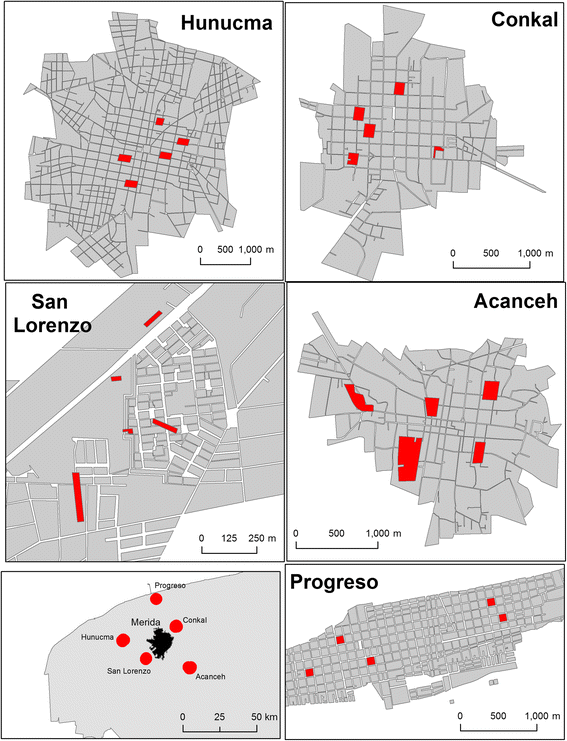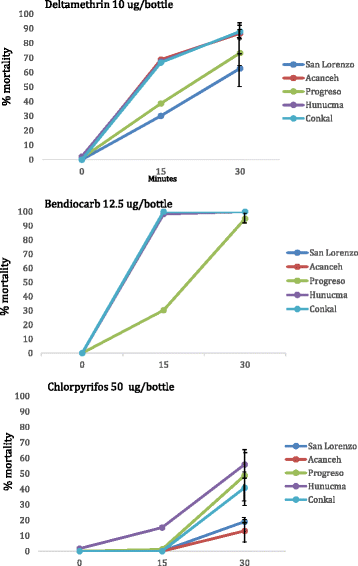Spatial variation of insecticide resistance in the dengue vector Aedes aegypti presents unique vector control challenges
- PMID: 26846468
- PMCID: PMC4743324
- DOI: 10.1186/s13071-016-1346-3
Spatial variation of insecticide resistance in the dengue vector Aedes aegypti presents unique vector control challenges
Abstract
Background: Dengue is a major public health problem in Mexico, where the use of chemical insecticides to control the principal dengue vector, Aedes aegypti, is widespread. Resistance to insecticides has been reported in multiple sites, and the frequency of kdr mutations associated with pyrethroid resistance has increased rapidly in recent years. In the present study, we characterized patterns of insecticide resistance in Ae. aegypti populations in five small towns surrounding the city of Merida, Mexico.
Methods: A cross-sectional, entomological survey was performed between June and August 2013 in 250 houses in each of the five towns. Indoor resting adult mosquitoes were collected in all houses and four ovitraps were placed in each study block. CDC bottle bioassays were conducted using F0-F2 individuals reared from the ovitraps and kdr allele (Ile1016 and Cys1534) frequencies were determined.
Results: High, but varying, levels of resistance to chorpyrifos-ethyl was detected in all study towns, complete susceptibility to bendiocarb in all except one town, and variations in resistance to deltamethrin between towns, ranging from 63-88% mortality. Significant associations were detected between deltamethrin resistance and the presence of both kdr alleles. Phenotypic resistance was highly predictive of the presence of both alleles, however, not all mosquitoes containing a mutant allele were phenotypically resistant. An analysis of genotypic differentiation (exact G test) between the five towns based on the adult female Ae. aegypti collected from inside houses showed highly significant differences (p < 0.0001) between genotypes for both loci. When this was further analyzed to look for fine scale differences at the block level within towns, genotypic differentiation was significant for both loci in San Lorenzo (Ile1016, p = 0.018 and Cys1534, p = 0.007) and for Ile1016 in Acanceh (p = 0.013) and Conkal (p = 0.031).
Conclusions: The results from this study suggest that 3 years after switching chemical groups, deltamethrin resistance and a high frequency of kdr alleles persisted in Ae. aegypti populations. The spatial variation that was detected in both resistance phenotypes and genotypes has practical implications, both for vector control operations as well as insecticide resistance management strategies.
Figures


References
-
- Gubler DJ, Trent DW. Emergence of epidemic dengue/dengue hemorrhagic fever as a public health problem in the Americas. Infect Agents Dis. 1993;2(6):383–93. - PubMed
Publication types
MeSH terms
Substances
LinkOut - more resources
Full Text Sources
Other Literature Sources
Miscellaneous

